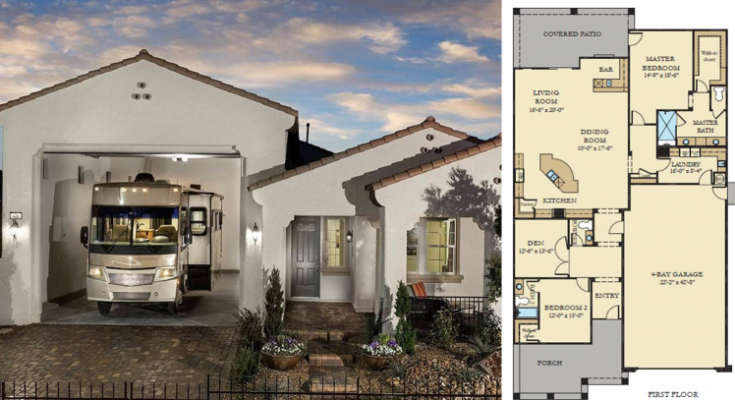Who wants to leave their considerable investment, whether it cost 5K or 2 million, in their driveway where it’s totally exposed? It’s not just the money that a motorhome, travel trailer or other RV cost to buy; it’s also that once you get an RV just how you want it, nice and clean and set up for your personal camping or road tripping needs, you don’t want anything to disturb that, right? So people have a few options.
One of these is to build an RV garage that’s attached to the house. So how does this work? Well, one way is that an RV garage is built as part of the house from the start. You can buy homes with RV garages already on them. This involves a premium – a house can be around $25,000 more when it comes with this feature (of course it can be more if you’re living in an area where land is highly precious, more than the average, maybe like Hollywood or a similar spot).
An average RV garage is around 22’2″ by 42’8″ – this size of RV garage port is big enough for most RVs. They have extra high ceilings, obviously, so the RV garage door leaves lots of clearance for the types of RVs you can usually buy at an RV dealer.
RV garages also have 50-amp outlets to charge and power motorhomes and travel trailers. These ports have the added bonus of being able to charge electric cars, making buying an EV a bit easier if that’s on anyone’s mind.
RV garages also have sewage connections outside the garage’s back door, to clean out tanks.
A general idea of a lot size if you’re living in a “community” that includes an RV bay in a place like Nevada (I can’t give an example from each state because they vary so much, but just as a basic starting point for understanding I’ll use Nevada) is around 6,000 square feet.
 " >
" >


